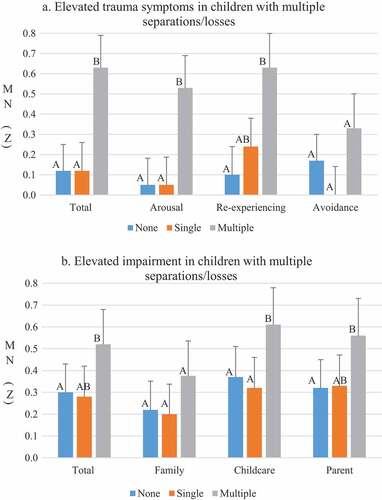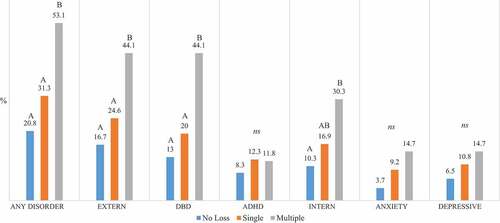Figures & data
Table 1. Frequencies of separation/loss, violence exposure, and non-interpersonal trauma events.
Table 2. Correlations among study variables.
Table 3. Psychiatric disorders linked with multiple separations/losses.
Figure 1. Multiple separations/losses associated with trauma symptoms and impairment.

Figure 2. Psychiatric disorders by separation/loss group.

